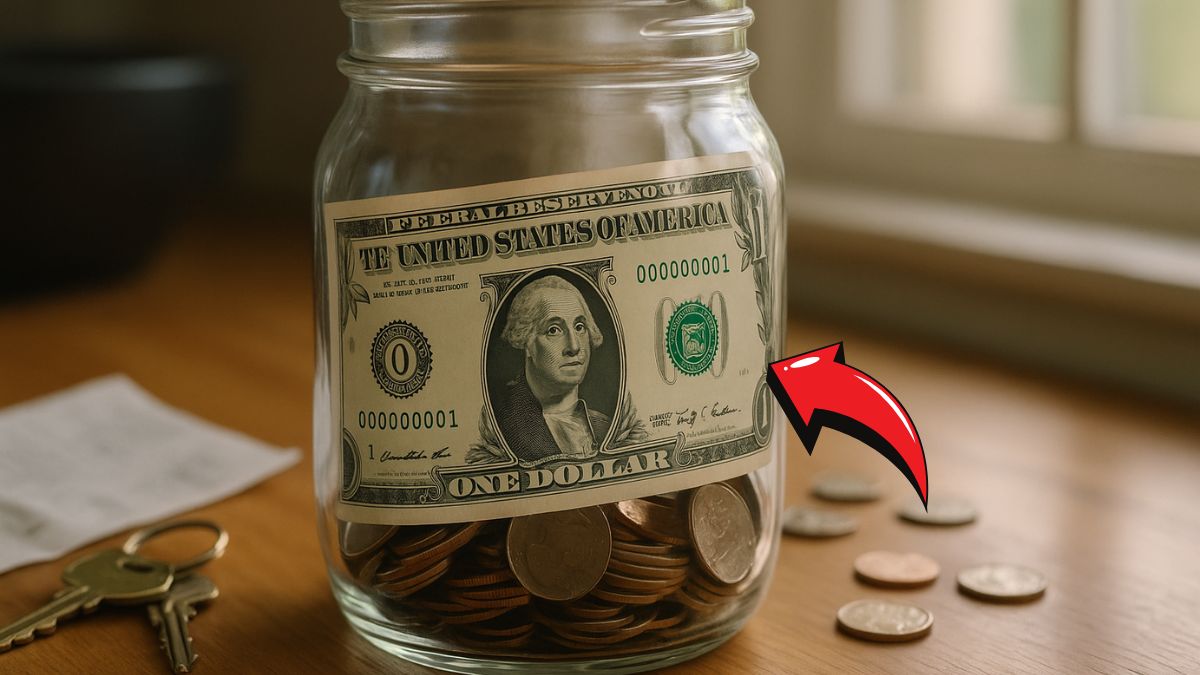Rare Serial Number $1 Bill Found in Change Jar Is Now Worth a Fortune
In an astonishing turn of events, a seemingly ordinary $1 bill discovered in a household change jar has been identified as a rare collectible, fetching a significant sum in the collector’s market.
This discovery underscores the potential value hidden in everyday currency, especially those with unique serial numbers.
Understanding the Significance of Serial Numbers
Every U.S. dollar bill carries a unique serial number, a combination of letters and numbers that can sometimes hold significant value for collectors.
Certain patterns or anomalies in these serial numbers can transform a regular bill into a sought-after collectible.
Types of Valuable Serial Numbers
- Solid Numbers: All digits are the same (e.g., 77777777).
- Ladder: Sequential numbers (e.g., 12345678).
- Radar: Palindromic numbers (e.g., 12344321).
- Repeater: Repeating sequences (e.g., 12121212).
- Low Serial Numbers: Numbers starting with multiple zeros (e.g., 00000001).
- Star Notes: Indicated by a star (*) at the end, replacing a misprinted bill.
The Discovery: A Collector’s Dream
The bill in question, discovered in a change jar, bore the serial number G00000001I, marking it as the very first note printed in its series.
Such low serial numbers are exceedingly rare, often reserved for dignitaries or collectors.
The presence of this bill in general circulation is an anomaly, making its discovery all the more remarkable.
Valuation and Market Impact
Upon authentication, the bill’s value skyrocketed. While a standard $1 bill holds its face value, this particular note’s unique serial number elevated its worth significantly.
Collectors have been known to pay thousands for such rare finds. In this case, the bill fetched $15,000 at auction, a testament to its rarity and desirability.
Comparative Analysis: Value of Unique $1 Bills
| Serial Number Type | Example | Estimated Value |
|---|---|---|
| Solid Numbers | 77777777 | $7,000 – $8,000 |
| Ladder | 12345678 | $5,000 – $6,000 |
| Radar | 12344321 | $2,500 – $3,500 |
| Repeater | 12121212 | $1,500 – $2,000 |
| Low Serial Number | 00000001 | $10,000 – $15,000 |
| Star Note | G00000001* | $3,000 – $4,000 |
Values are approximate and can vary based on condition and market demand.
The Collector’s Market: A Growing Interest
The numismatic community has seen a surge in interest, with collectors eagerly seeking out bills with unique serial numbers.
Online platforms, auctions, and collector forums have become hotspots for trading and valuing such currency.
The discovery of the G00000001I bill has only intensified this enthusiasm, highlighting the potential treasures hidden in everyday transactions.
The discovery of a rare $1 bill in a simple change jar serves as a compelling reminder of the hidden value that can exist in everyday items.
As the collector’s market continues to thrive, it’s worth taking a closer look at the currency that passes through our hands daily. Who knows? You might just find a small fortune waiting to be uncovered.
FAQs
What makes a serial number valuable?
Serial numbers with unique patterns, such as all identical digits, sequences, palindromes, or those ending with a star, are considered valuable due to their rarity and appeal to collectors.
How can I check if my $1 bill is valuable?
Examine the serial number for unique patterns or anomalies. If you suspect your bill might be valuable, consult with a currency expert or have it appraised by a professional grading service.
Where can I sell a rare $1 bill?
Rare bills can be sold through auction houses, online marketplaces specializing in collectibles, or directly to collectors via forums and collector groups.

